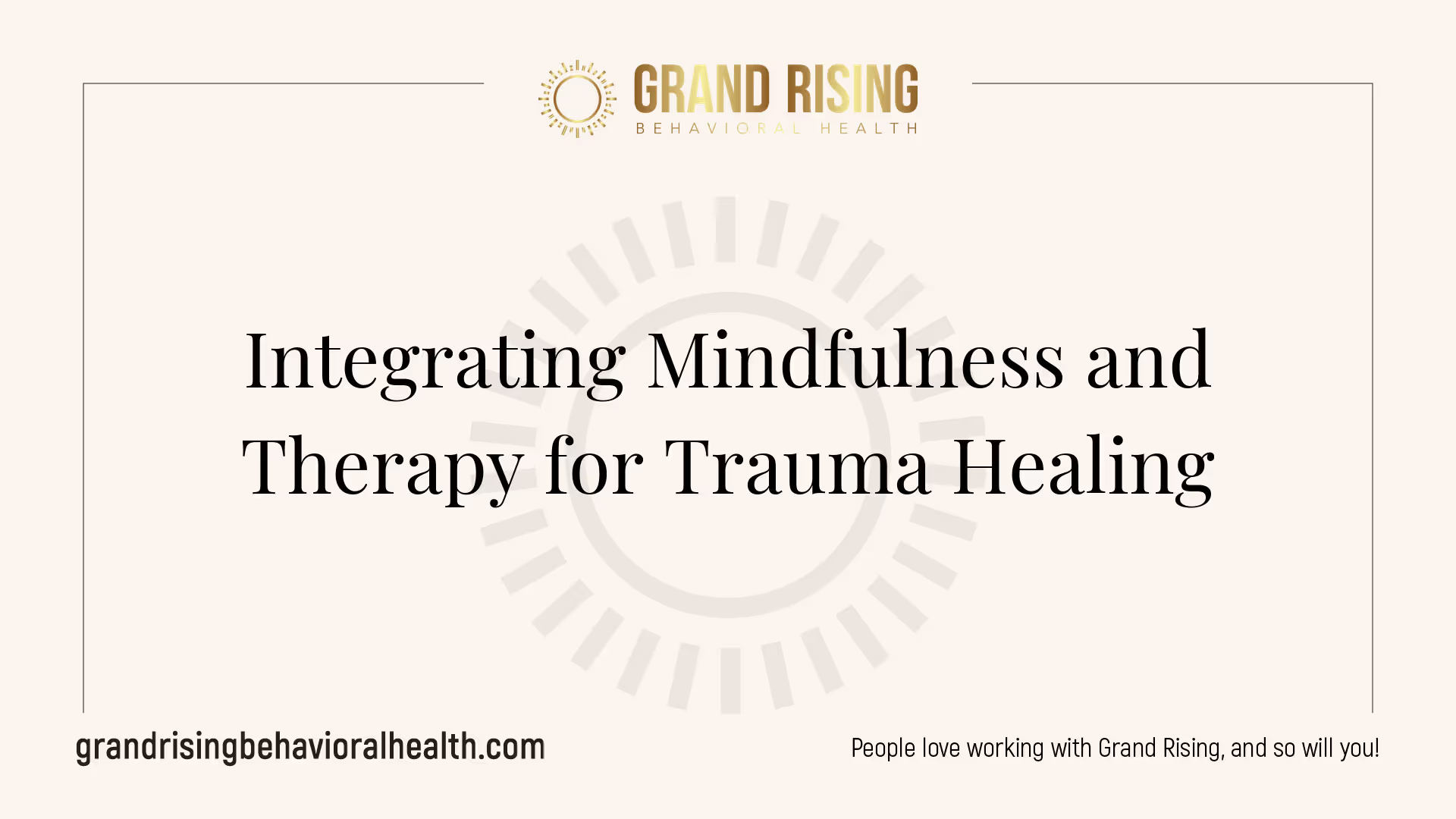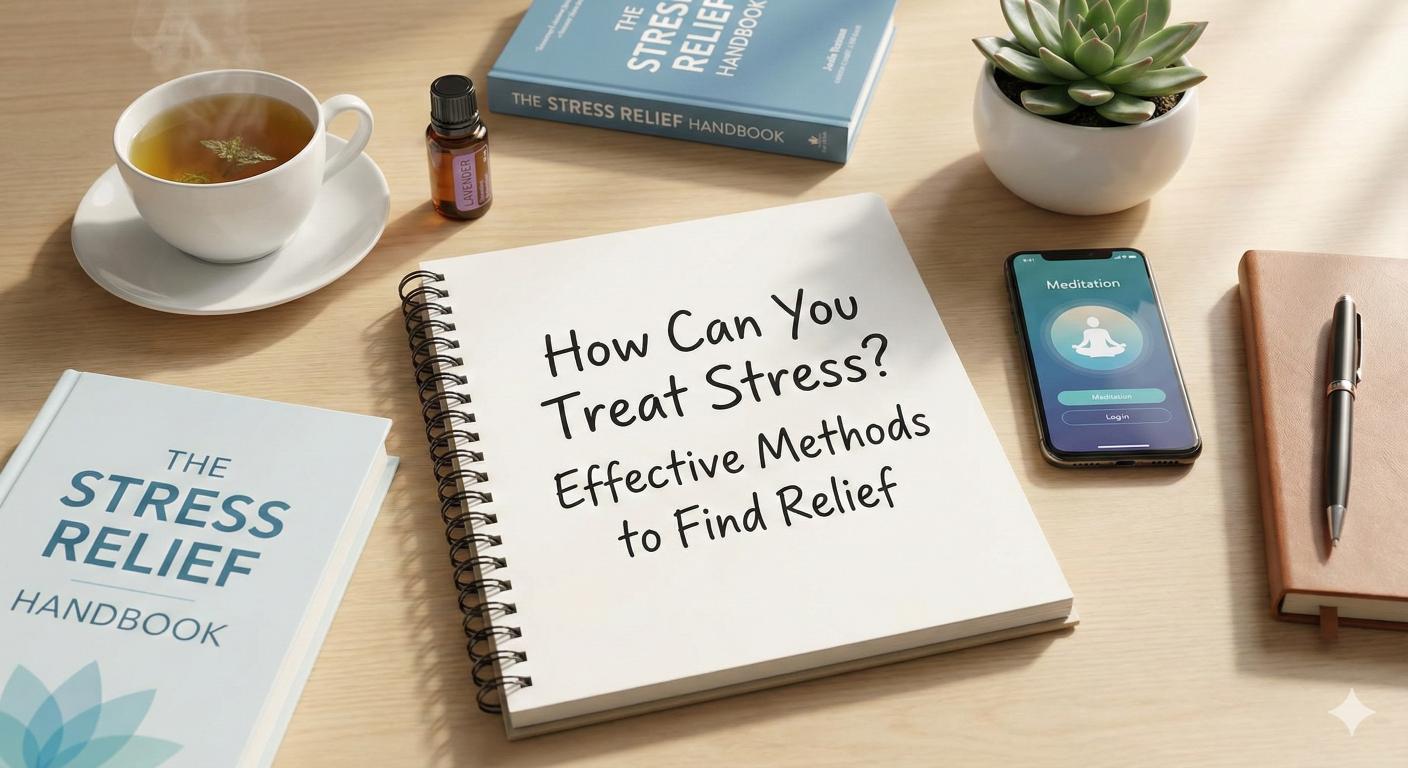The Crucial Role of Mindfulness in Healing Trauma
Discover the role of mindfulness in trauma healing and how it fosters recovery and emotional balance.


Understanding Mindfulness in Trauma Healing
Mindfulness plays a significant role in healing trauma and stress-related disorders. By fostering present-moment awareness, mindfulness can help individuals navigate the complexities of their mental health. In this section, the benefits of mindfulness in reducing anxiety and depression alongside its effects on blood pressure and sleep quality will be examined.
Benefits of Mindfulness in Reducing Anxiety and Depression
Mindfulness-based treatments have been shown to significantly reduce symptoms of anxiety and depression. By encouraging individuals to focus on the present moment, mindfulness helps many to detach from negative thoughts linked to past experiences or future uncertainties. Studies indicate that practicing mindfulness contributes to preventing the relapse of depression, providing coping mechanisms that ground individuals in their current experiences [1].
The following table outlines key findings from various studies on mindfulness and its impact on anxiety and depression treatment:
Study FocusDecrease in AnxietyDecrease in DepressionMindfulness-Based Stress Reduction (MBSR)30%25%Mindfulness-Based Cognitive Therapy (MBCT)40%50%
Effects of Mindfulness on Blood Pressure and Sleep Quality
In addition to improving mental health conditions, mindfulness practices also lead to physical health benefits. Research indicates that engaging in mindfulness can lower blood pressure and enhance sleep quality. By promoting relaxation and reducing stress responses in the body, mindfulness allows individuals to experience a calm state conducive to better sleep [1].
Optimal blood pressure levels and quality sleep are crucial for overall well-being, especially for those recovering from trauma. The table below illustrates the effects of mindfulness on these physical health aspects:
Health AspectImprovement ObservedBlood Pressure5-10 mmHg reductionSleep Quality40% improvement in sleep duration and quality
In summary, the role of mindfulness in trauma healing extends beyond emotional benefits to encompass significant physical health improvements, demonstrating its value in holistic trauma recovery. For further insights on addressing trauma, consider exploring our articles on the impact of trauma on sleep and physical symptoms of unresolved trauma.

Role of Mindfulness in PTSD and Addiction
Mindfulness practices play a significant role in addressing trauma-related disorders such as PTSD and addiction. These techniques promote self-awareness, emotional regulation, and resilience, making them useful tools for individuals facing these challenges.
Mindfulness Training for PTSD and Eating Disorders
Mindfulness training has been researched for its effectiveness in treating PTSD and eating disorders. Programs such as Mindfulness-Based Stress Reduction (MBSR) and Mindfulness-Based Cognitive Therapy (MBCT) have been utilized in therapeutic settings. These approaches help individuals focus on the present moment, which can reduce symptoms associated with traumatic memories and improve emotional well-being [2].
Studies indicate that mindfulness can enhance a person's capacity to cope with distressing feelings, thus creating a better environment for healing. The practice of mindfulness may lead to benefits that include improved mood, greater self-acceptance, and reduced anxiety. A summary table highlights the key outcomes associated with mindfulness training for PTSD and eating disorders:
BenefitDescriptionReduced AnxietyMindfulness helps manage anxiety levels.Enhanced MoodImproved emotional stability and well-being.Better Self-AcceptanceIncreased self-acceptance and compassion.
Mindfulness in Reducing Anxiety among Opioid Users
Research shows that mindfulness can be particularly beneficial for individuals in recovery from opioid addiction. It has been demonstrated that mindfulness practices can help reduce anxiety among those being treated for opioid use. The focus on present-moment awareness allows individuals to navigate cravings and triggers more effectively.
Various mindfulness techniques, including meditation, have been recognized for their positive impact on mental health. These techniques aid in reducing withdrawal symptoms and promoting abstinence. The following table outlines the therapeutic effects of mindfulness on opioid users:
OutcomeEffectDecreased AnxietySignificant reduction in anxiety levels.Lower Craving IntensityHelps manage cravings effectively.Improved Coping SkillsEnhances ability to cope with stress.
By integrating mindfulness approaches within therapeutic practices, individuals dealing with PTSD and addiction can experience a profound shift toward recovery and healing. This integration can be particularly effective in combination with therapies such as Dialectical Behavior Therapy (DBT) and Eye Movement Desensitization and Reprocessing Therapy (EMDR), which can further support individuals in their healing journey [3].
These practices not only facilitate recovery from trauma but also promote healthier coping mechanisms and choices in the long term, ultimately enhancing quality of life. For related information on addressing the connections between trauma and addiction, refer to our article on the connection between trauma and addiction.

Mindfulness and Healthy Choices
Mindfulness plays a significant role in promoting healthier lifestyle choices, particularly relating to diet and eating habits. Research indicates that adopting mindfulness practices can be beneficial for individuals seeking to improve their physical and emotional well-being.
Encouraging Healthier Diet through Mindfulness
Mindfulness teaches individuals to become more aware of the present moment, including their thoughts and feelings about food. This heightened awareness can lead to healthier dietary choices. By practicing mindfulness, individuals can better recognize their body's signals, such as hunger and fullness. This process assists them in making informed decisions about what and when to eat.
Mindfulness TechniquesBenefitsMindful EatingHelps recognize hunger cues and reduces overeatingBody ScanningEnhances awareness of physical sensations related to foodReflective EatingEncourages thoughtful selection of food, fostering healthy eating habits
Engaging in mindfulness meditation has been shown to positively impact the immune system and reduce inflammation, which can contribute to better health overall [2]. Thus, individuals focused on adopting a healthier diet may find mindfulness an effective tool.
Mindfulness to Combat Binge and Emotional Eating
Mindfulness has also been found to reduce binge eating and address emotional eating behaviors. By cultivating a non-judgmental awareness of their emotions and dietary habits, individuals can learn to pause before impulsively reaching for food as a coping mechanism. This practice helps to identify triggers and develop healthier responses to emotional stress.
Strategies that can be incorporated include:
Strategies for Mindfulness in EatingDescriptionMindful ObservationsNoticing cravings without acting on themJournalingRecording emotions linked to eating to understand patternsDeep BreathingUsing breath to anchor oneself during moments of stress before eating
These methods have shown promise not only in reducing episodes of binge eating but also in fostering a healthier relationship with food. Mindfulness techniques help individuals see food as nourishment rather than a source of comfort or escape, positively influencing both psychological and physical health.
Through these practices, mindfulness can serve as a fundamental aspect of trauma healing by addressing underlying issues related to eating behaviors and promoting healthier choices. For more strategies related to trauma recovery, explore our articles on addressing trauma in relationships and coping with hypervigilance in trauma survivors.

Trauma-Informed Mindfulness Approaches
Incorporating mindfulness into trauma healing requires a sensitive and informed approach. This section discusses how to make mindfulness accessible for trauma survivors and the necessary shift towards trauma-informed practices.
Making Mindfulness Accessible for Trauma Survivors
A trauma-based approach can significantly enhance the accessibility of mindfulness for those who have experienced trauma. It is estimated that around 61% of adults have faced at least one traumatic event in their lives, according to research on Adverse Childhood Experiences (ACEs) [4]. Ensuring that mindfulness practices are welcoming and accommodating for these individuals is essential for effective healing.
Trauma-informed mindfulness focuses on helping participants establish a sense of safety and control during practices. These approaches aim to avoid potential triggers and prevent overwhelming experiences. By adapting mindfulness exercises to the unique needs of trauma survivors, practitioners can facilitate a supportive environment where individuals can begin to confront painful experiences at their own pace.
Shifting to a Trauma-Informed Approach in Mindfulness Practices
The transition to a trauma-informed approach is reshaping how clinicians, mental health professionals, and mindfulness instructors engage with trauma survivors. This method emphasizes avoiding triggers while simultaneously strengthening a person's capacity to face difficult emotions.
Trauma-informed mindfulness incorporates modifications to traditional meditation practices by introducing grounding, anchoring, and self-regulation techniques. These adaptations help maintain balance within the nervous system, allowing those who have experienced trauma to manage their symptoms more effectively and feel safer in their bodies. This approach not only nurtures the ability to embrace physical sensations but also promotes self-regulation and mindfulness cultivation.
Integrating these trauma-sensitive practices into mindfulness training can enhance the overall healing experience for trauma survivors, ultimately fostering their recovery journey. By actively addressing the unique challenges they face, practitioners can better support individuals in rebuilding trust and navigating various aspects of trauma recovery, including addressing self-blame and emotional regulation. For more insights into this complex relationship, consider exploring related topics such as addressing trauma in relationships and recognizing dissociation in trauma survivors.

Mindfulness Practices for Trauma Survivors
Adapting Mindfulness for Trauma Healing
Adapting mindfulness practices for trauma survivors is essential for effective healing. Traditional meditation techniques can be modified to include grounding, anchoring, and self-regulation exercises, which help maintain balance in the nervous system. This approach empowers individuals to manage their symptoms while feeling safer in their own bodies.
Key elements of trauma-informed mindfulness include:
Programs focused on trauma-informed mindfulness often incorporate tools and modifications tailored specifically to the unique needs of trauma survivors. These practices prioritize safety and healing, making mindfulness more accessible and effective [4].
Benefits and Challenges of Trauma-Informed Mindfulness
Trauma-informed mindfulness offers numerous benefits but also presents certain challenges. The following table summarizes some of the key aspects of this approach:
BenefitsChallengesHelps individuals befriend their physical sensationsIndividuals may initially feel discomfort when confronting traumatic memoriesImproves self-regulation and emotional balanceRequires consistent practice and may take time to see resultsFacilitates a compassionate understanding of thoughts and feelingsFinding qualified practitioners can be difficultAids in preparing for therapies like EMDR by creating emotional resilience (Healthline)Survivors may encounter internal resistance to mindfulness practices
Adapting mindfulness to align with trauma-informed principles is crucial for fostering a healing environment. Techniques such as guided meditation instruction, grounding exercises, and engaging the five senses allow individuals to connect more deeply with the present moment. Each person's journey is unique, but with perseverance and the right support, trauma survivors can find solace and healing through these practices.

Integrating Mindfulness and Therapy for Trauma Healing
In the realm of trauma healing, integrating mindfulness practices with established therapeutic techniques has proven beneficial. Two notable therapies that effectively incorporate mindfulness are Dialectical Behavior Therapy (DBT) and Eye Movement Desensitization and Reprocessing Therapy (EMDR).
Mindfulness in Dialectical Behavior Therapy (DBT)
Dialectical Behavior Therapy (DBT) is a therapeutic approach specifically designed to help individuals manage emotional distress and improve relationships. Mindfulness is a fundamental skill taught in DBT, enabling individuals to develop greater awareness of their thoughts, feelings, and behaviors. This practice allows trauma survivors to witness their experiences with compassion rather than judgment, fostering emotional regulation.
DBT emphasizes four key skills: mindfulness, distress tolerance, emotional regulation, and interpersonal effectiveness. The mindfulness component trains individuals to observe their internal experiences without becoming overwhelmed, aiding in the processing of trauma and reducing symptoms of anxiety and depression. By grounding themselves in the present moment, individuals gain insights into how past experiences influence their current behavior, which can help them address trauma's impact on addressing trauma in relationships and emotional reactions.
Eye Movement Desensitization and Reprocessing Therapy (EMDR) for Trauma
Eye Movement Desensitization and Reprocessing Therapy (EMDR) is a well-established treatment for trauma, demonstrating its efficacy through numerous studies. EMDR aids individuals in creating new neural pathways to promote nervous system regulation while processing distressing memories. Mindfulness can assist trauma survivors in preparing for EMDR by allowing them to engage with their internal feelings, thoughts, sensations, and memories compassionately.
Research supports the effectiveness of EMDR, with twelve randomized studies indicating rapid decreases in negative emotions and vividness of disturbing images through the eye movement component. Furthermore, twenty-four randomized controlled trials highlight EMDR's ability to address both psychological and physical symptoms stemming from traumatic experiences, making it a valuable tool in trauma recovery.
Therapy TypeKey FeaturesBenefitsDBTMindfulness practice, emotional regulation, distress toleranceEnhances awareness and self-acceptance, reduces emotional distressEMDRUtilizes eye movements to process traumaCreates neural pathways, reduces negative emotions associated with trauma
Integrating mindfulness with DBT and EMDR not only enhances the therapeutic process but also empowers individuals to effectively confront their trauma. This holistic approach emphasizes understanding and compassion, facilitating healing and encouraging trauma survivors to navigate their experiences with greater resilience. For those interested in exploring more about the effects of trauma on emotions, the connection between trauma and addiction may also provide valuable insights into coping strategies.
References
[2]:
[3]:
[4]:
[5]:
More Resources
A team ready to start your journey.
Get in touch — today.
We are a safe space – a haven for exceptional individuals to receive discreet, personalized, in-person treatment and care.
.avif)










